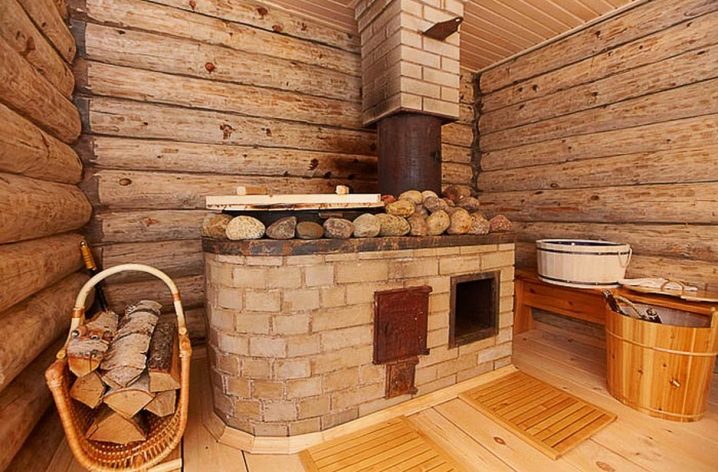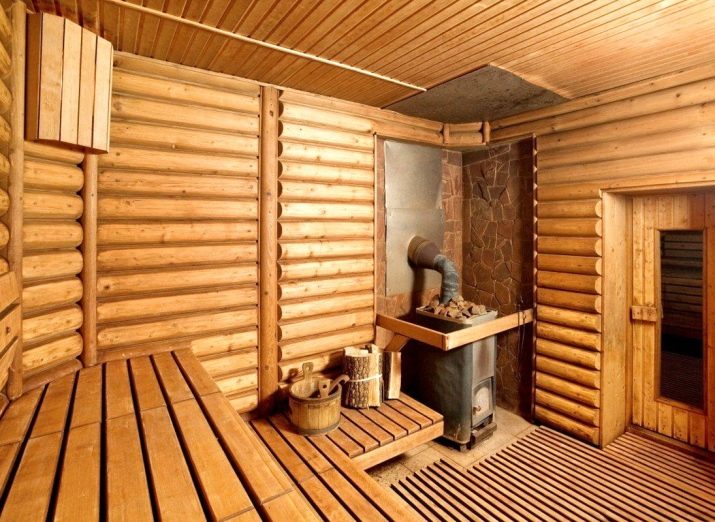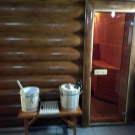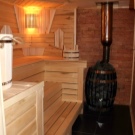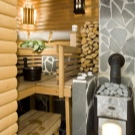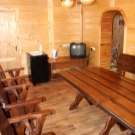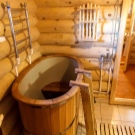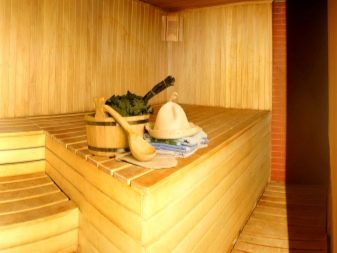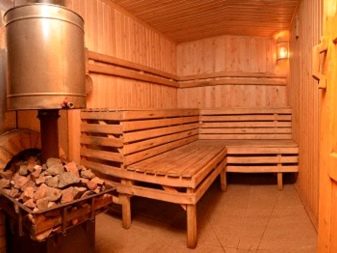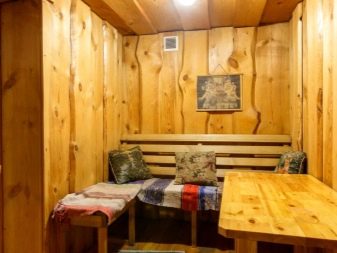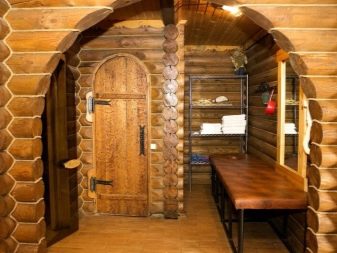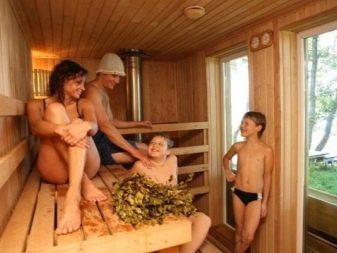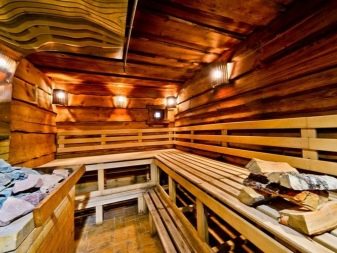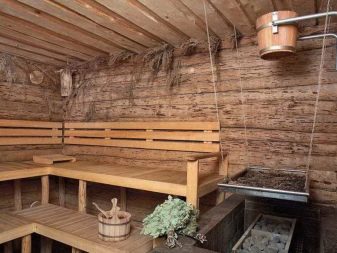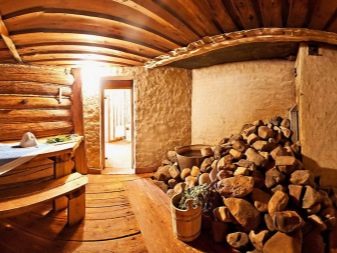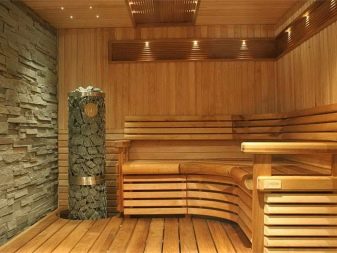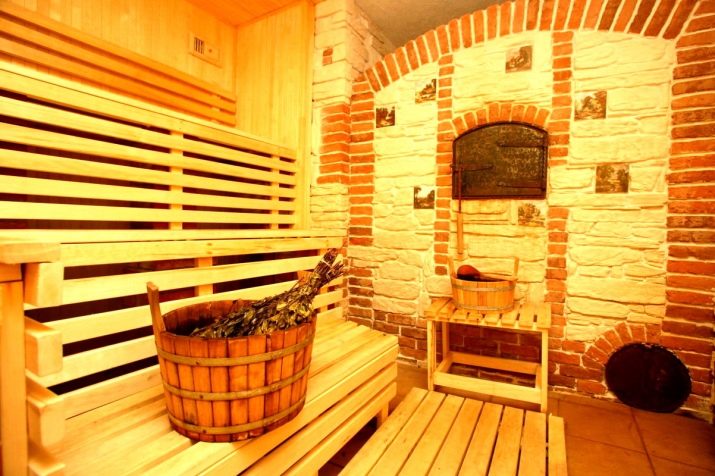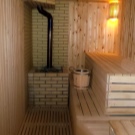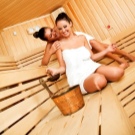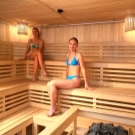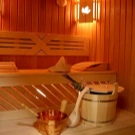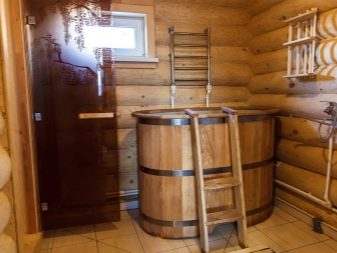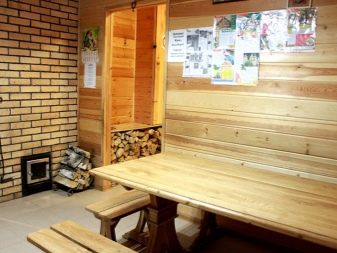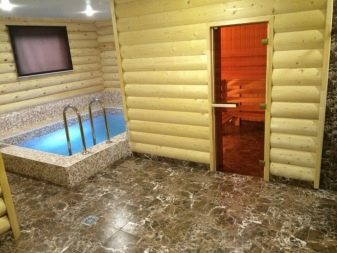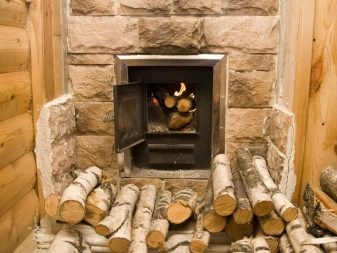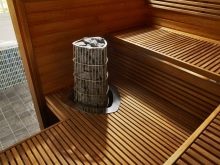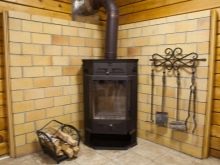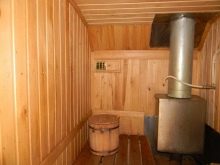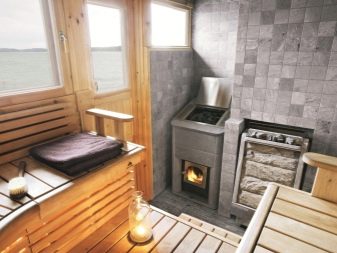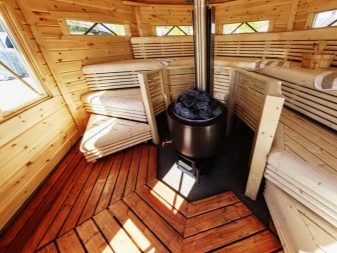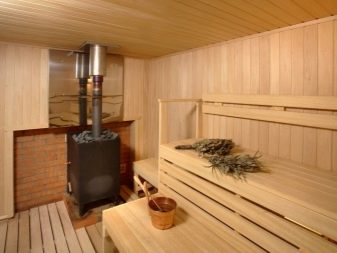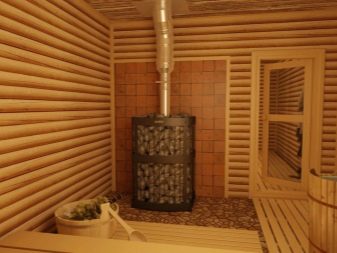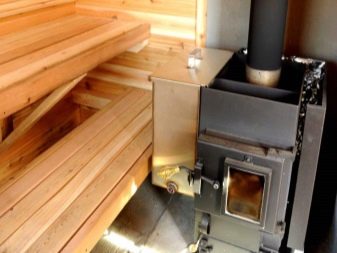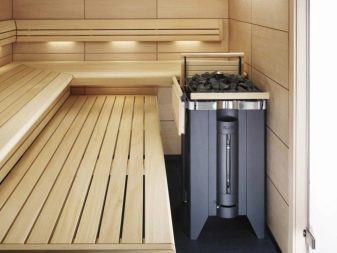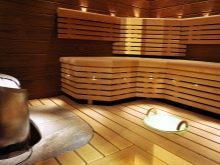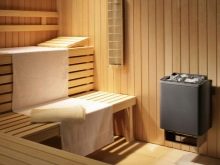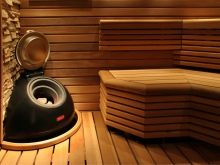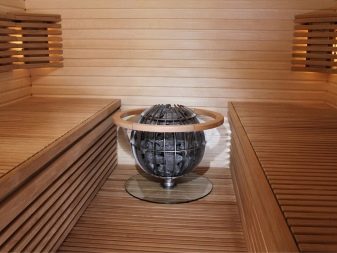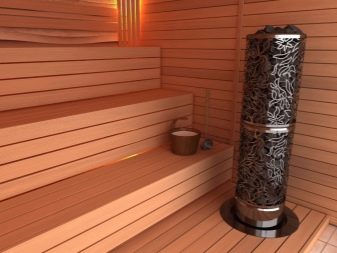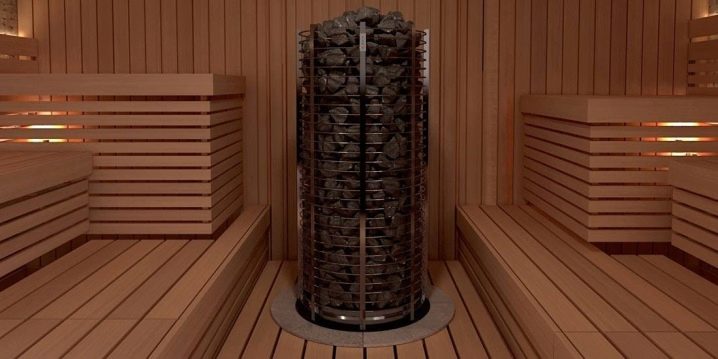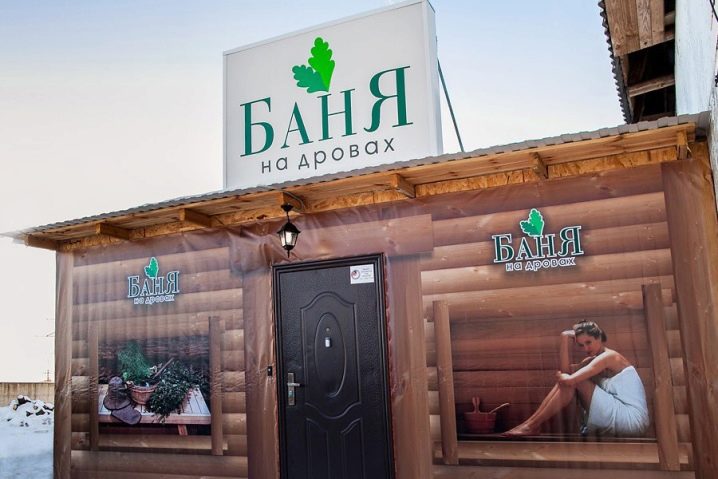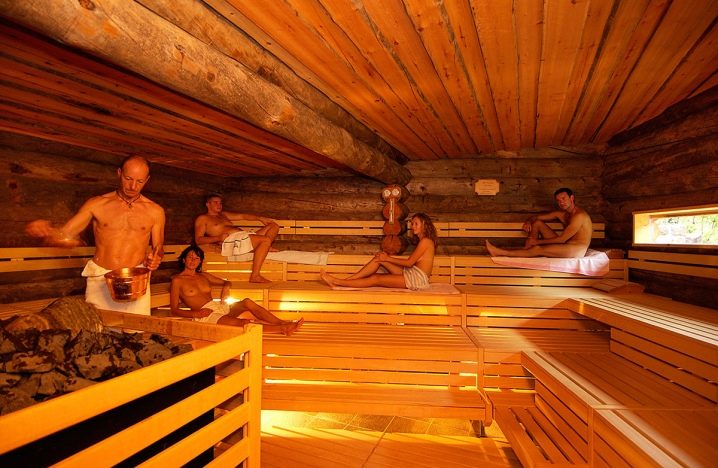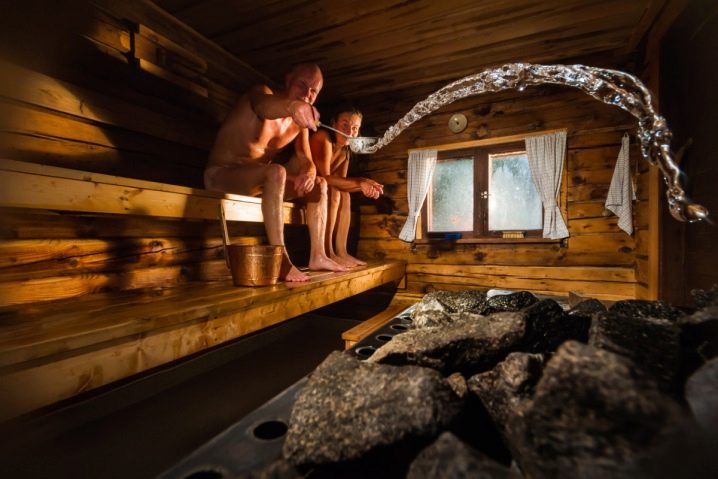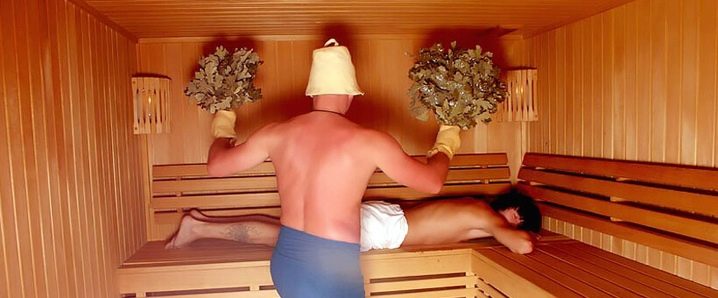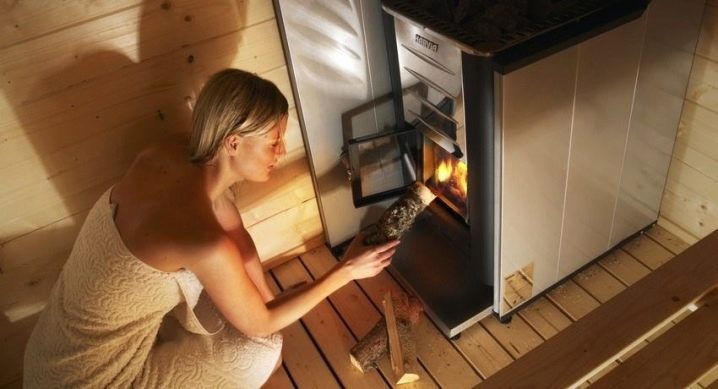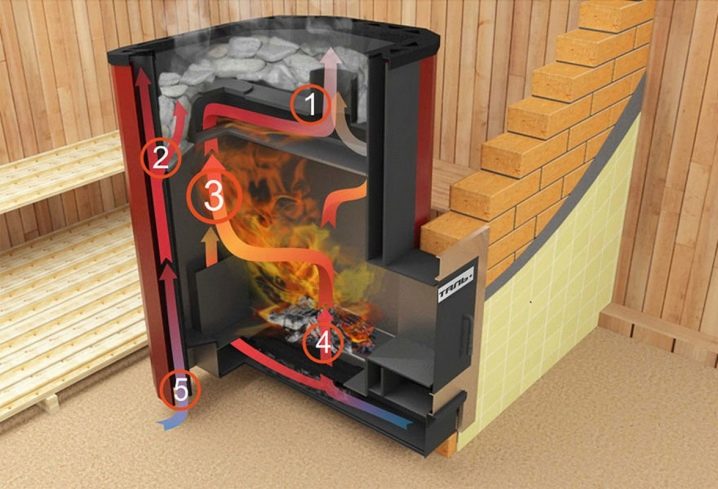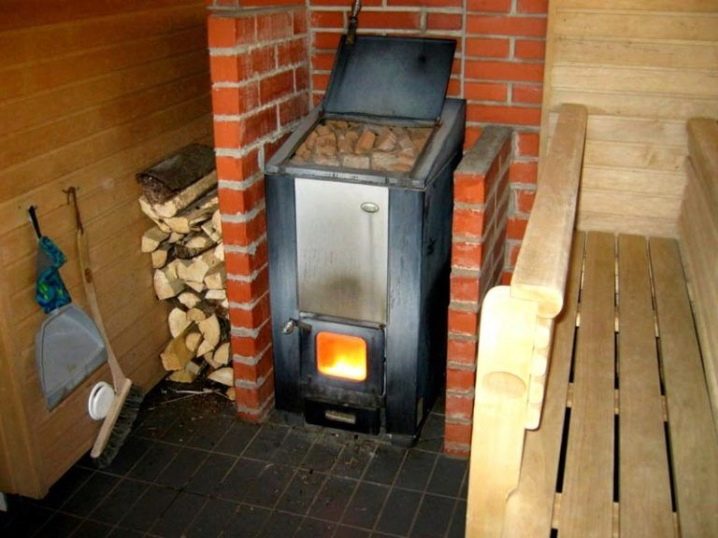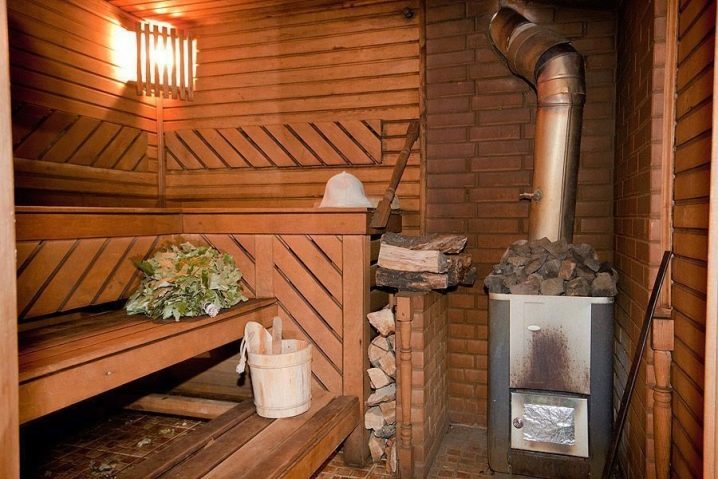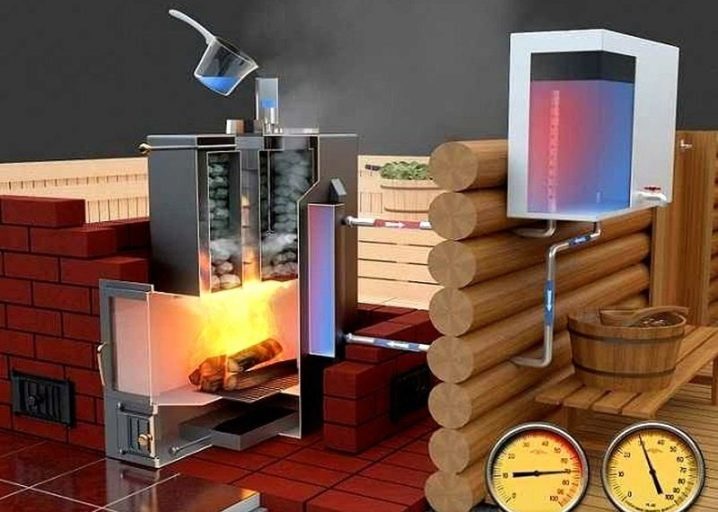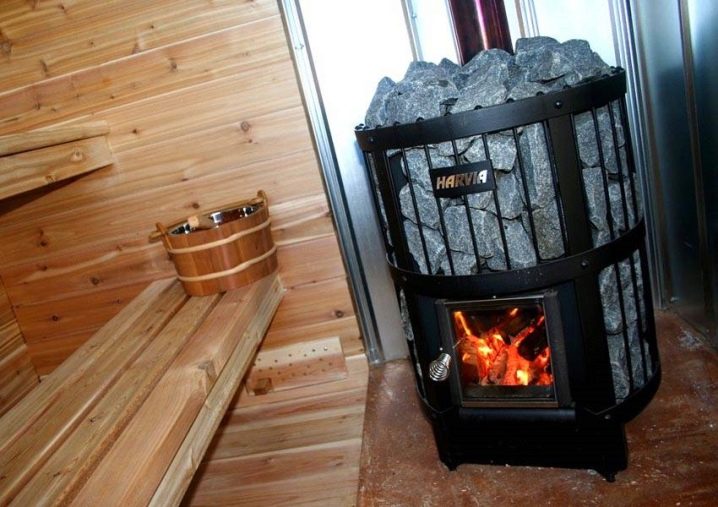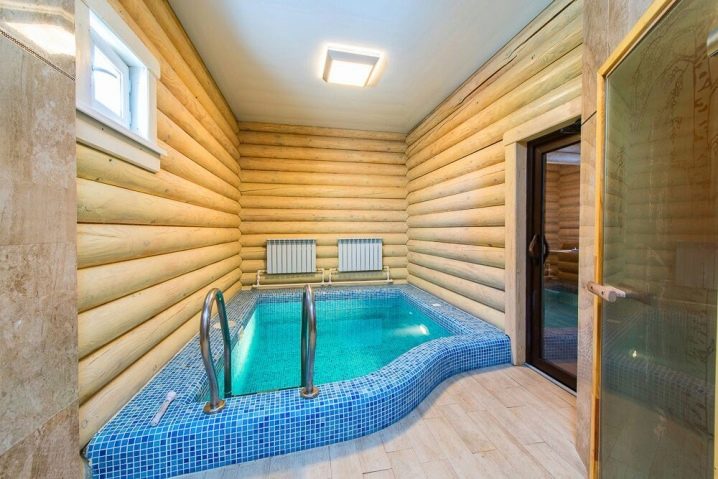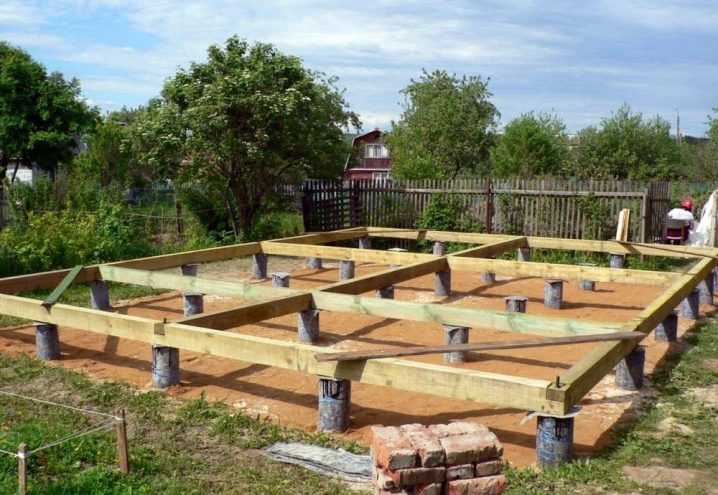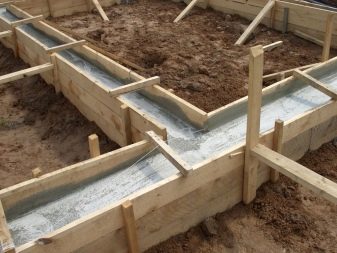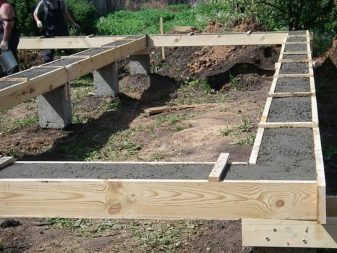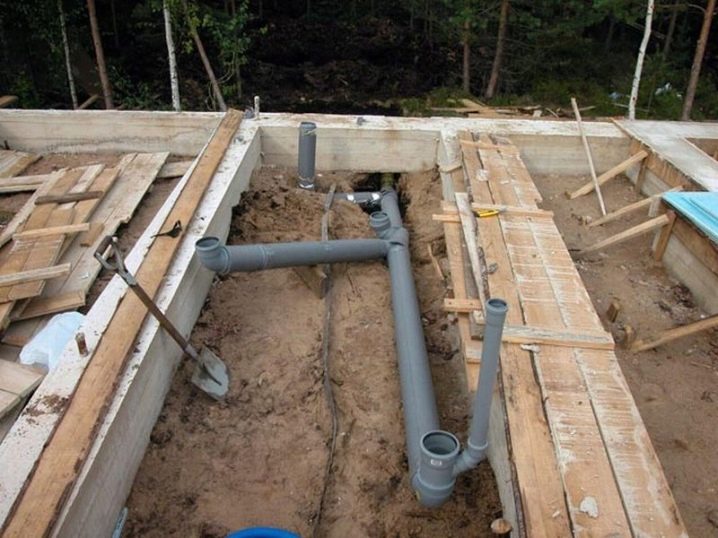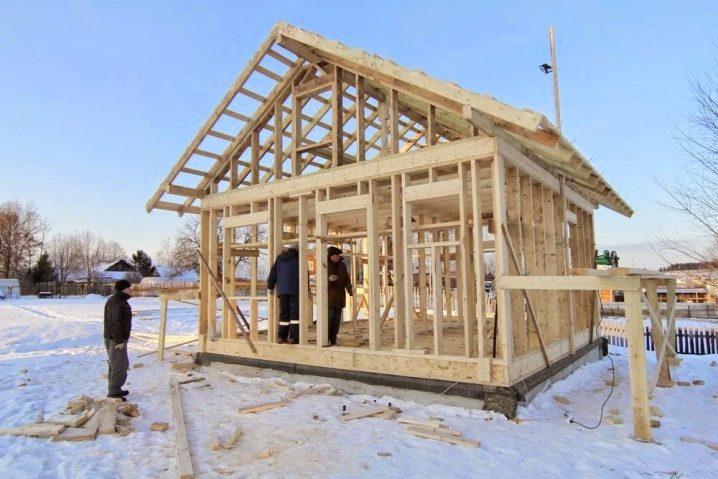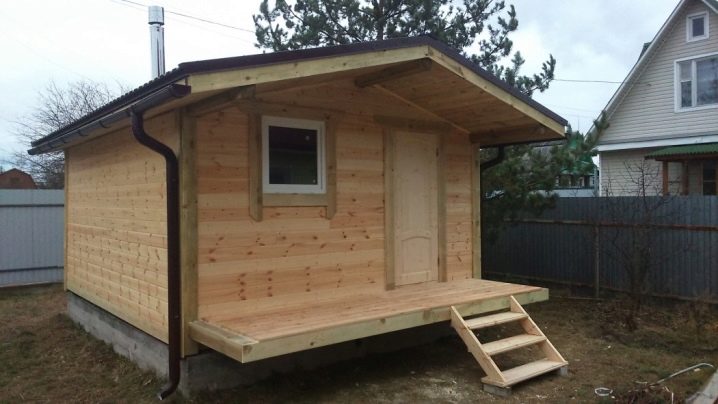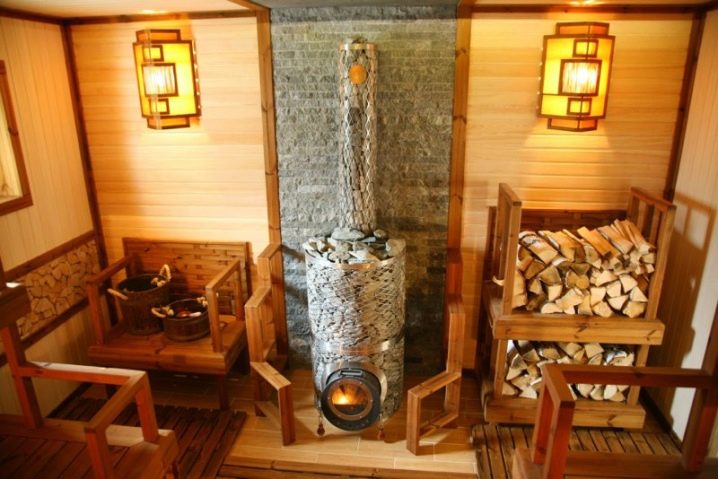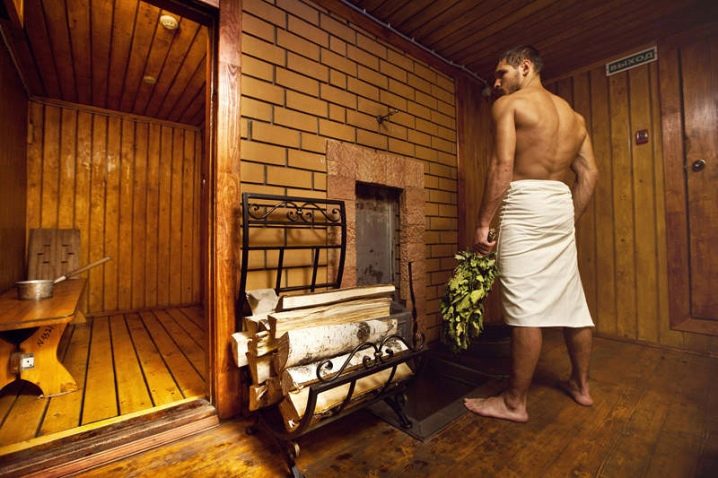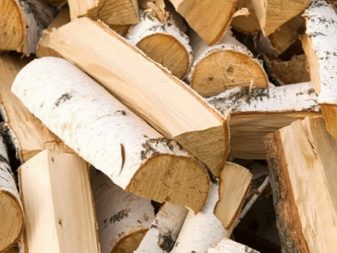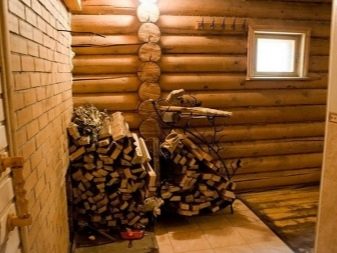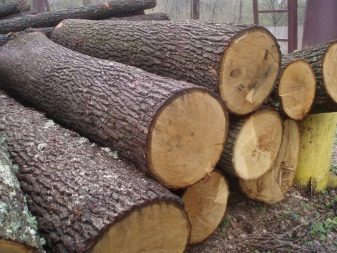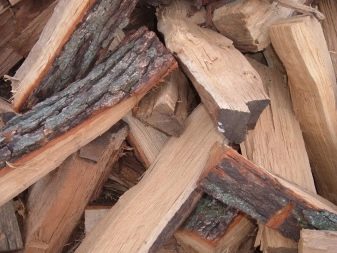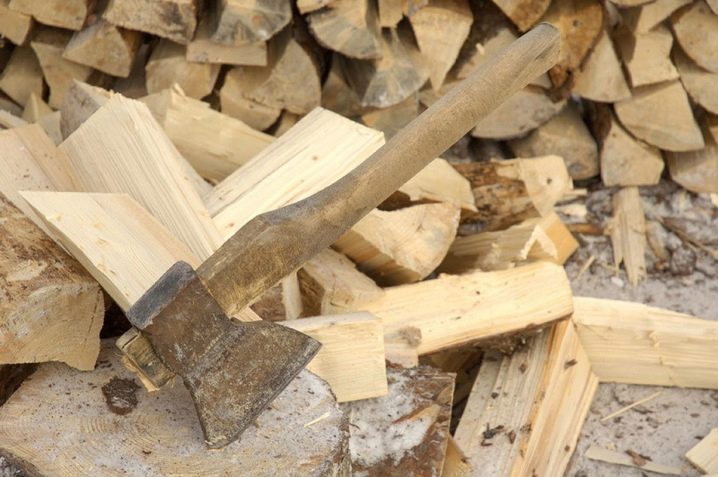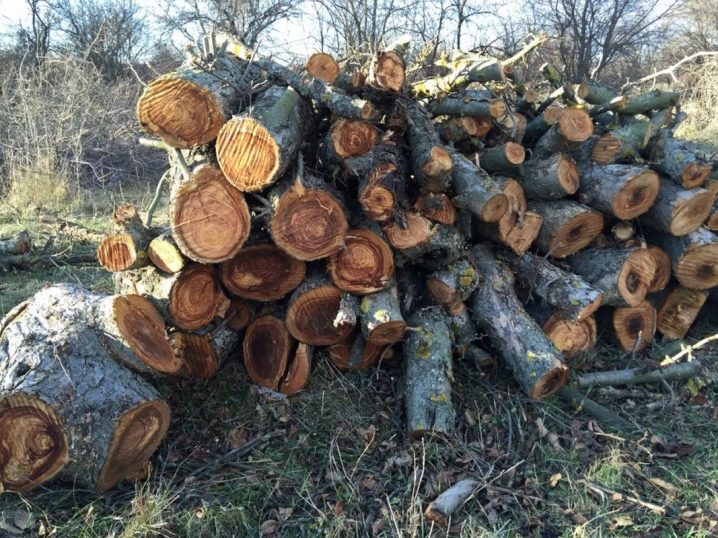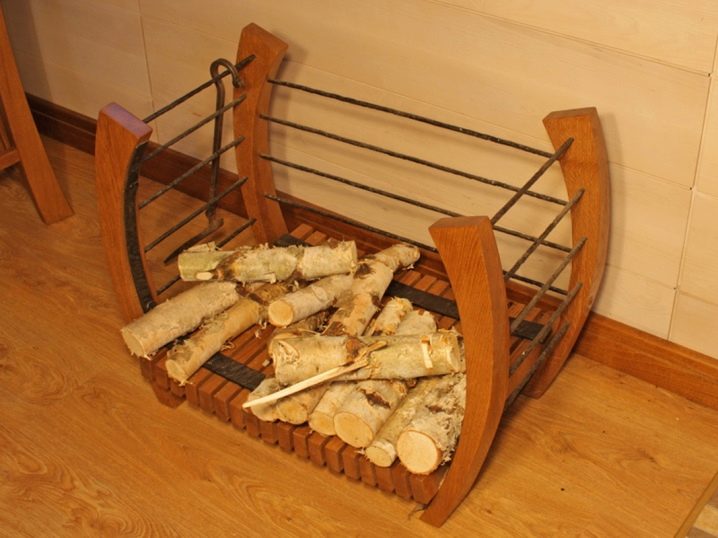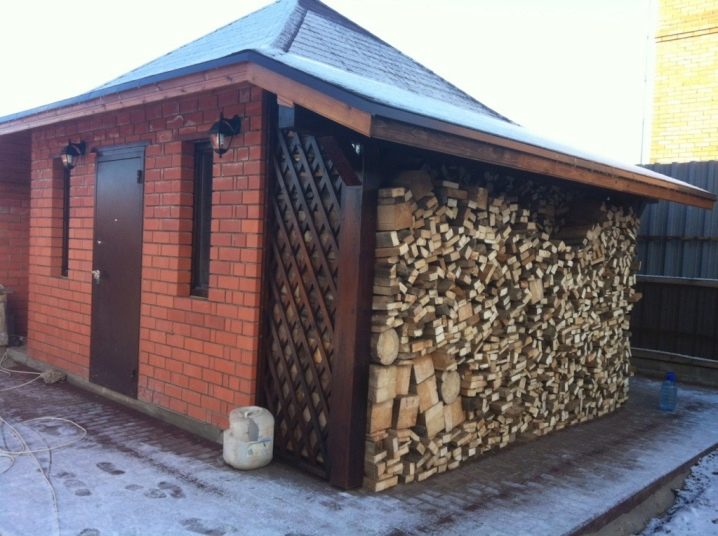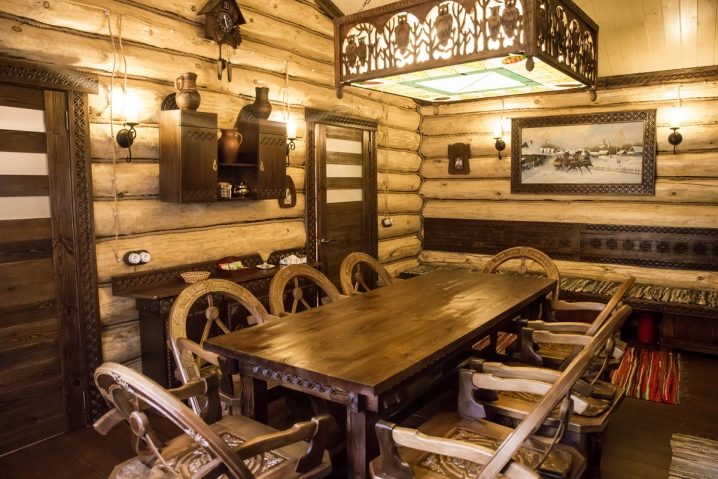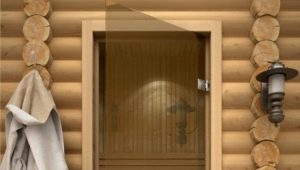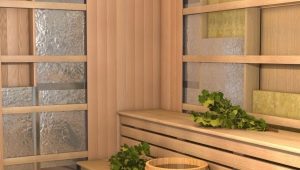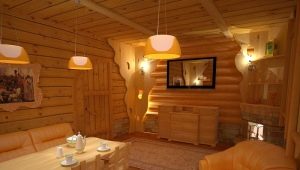Firewood baths: features and benefits
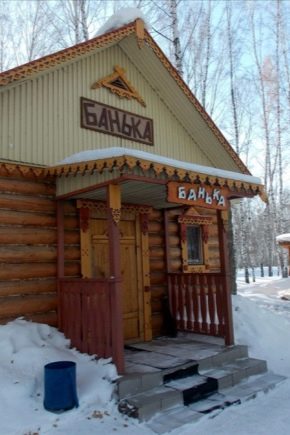
Since ancient times, this Russian bath has been considered the venue for all kinds of water procedures that have the most beneficial effect on the human body. That is why the equipment of such a bath at the cottage or house plot became the dream of the majority of lovers of comfortable rest.
Special features
The steam bath heated by firewood is a rustic classic that has been tested for hundreds of years. This is a traditional type of Finnish and Russian bath. All other types of structures, for example, Turkish hamam, mainly use other flue materials (coal or manure).
Bath, as a rule, has one or two main rooms - directly the steam room and the dressing room. The latter is used to undress and dress. In former times, this room was not heated and had no windows, only a bench was equipped in it. Nowadays, people are accustomed to comfort, therefore waiting rooms perform not only the function of changing rooms, but also become a full-fledged recreation area - they are made spacious and equipped with tables, shelves and other interior items.
That is why today the wood bath is much more than just a place to take hygienic procedures, it is a full-fledged room for cozy get-togethers with relatives and friends, as well as an indicator of the status of its owner - not every our compatriot can afford a cozy and multifunctional steam room .
Today, there is a wide variety of effective ways to heat the room, but wood-fired baths occupy a special place in this list.
The advantages of this design a lot:
- Wood bath is considered part of the culture and traditions of many peoples and nationalities.
- The principle of its work does not require electricity, gas pipeline and other additional utilities.
- Wood is considered a cheap and affordable fuel option.
- The traditional Russian steam room is the simplest in the technological sense device - because when using, for example, an electric stove, you can not splash water on hot stones, as is customary in traditional bath complexes.
- Wood can be stored for quite a long time, so once you have procured firewood, you can use them for a very long time.
- If the steam room is combined with the washing room, they can be heated from one stove.
- Firewood is more environmentally friendly than fuel oil or coal, as the latter, when used for a long time, begin to smoke and give off an unpleasant smell, which makes staying in the steam room rather unpleasant.
However, nothing perfect has yet been invented, therefore There are some drawbacks to the wood-burning bath, namely:
- A wood-heated sauna may not be built everywhere — in many places stove heating is prohibited.
- Finnish sauna on the degree of ease of operation inferior elektrokamenke.
- Firewood for heating water is less economical than modern gas water heaters.
- Wood requires a special place for storage, and in addition, if the woodpile is not sufficiently protected from moisture, the blanks can begin to rot and collapse.
- The temperature of the air in the steam room is rather difficult to control - it is determined solely by the personal feelings of the person who is preparing the bath for use. For comparison, the electric options of the firebox allow you to set the required temperature with an accuracy of 1 degree and change it as needed.
Nevertheless, despite all the shortcomings, a wood-fired bath has been and remains the most popular type of baths, which are built everywhere on private plots and in dacha farms.
Which is better - wood or electric?
Many believe that the stove can be called the heart of the entire bath. It is precisely its functioning that largely determines the efficiency of the entire complex as a whole. And it, in turn, depends on the type of fuel used. The three most common options are gas, electric, and firewood.
The gas version is used very rarely, however, has its advantages:
- low cost of energy;
- high degree of automation;
- the ability to control and adjust the temperature;
- Built-in protection system - if the wick fades, the flame immediately goes out.
It would seem a simple and economical method of forcing heat into the steam room. But he also has disadvantages:
- when using such structures, there is a high probability of carbon monoxide poisoning;
- gas equipment is explosive;
- Such a bath requires the presence of a gas pipeline, and this is quite a rare phenomenon in suburban settlements and suburban areas.
A safer option is an electric oven. This is a simple device that includes a heating heater, a series of insulation and a metal housing.
Equipment of this kind has undeniable advantages:
- total automation, the ability to adjust the temperature, setting the timer and frequency on;
- ease of installation and operation, the installation can be equipped with their own hands - for this it is enough just to install the firebox on a solid base and connect it to the AC network;
- heating rate
Electric Kamenka is considered the best way to raise the temperature in a cold room by several degrees.
She has drawbacks.Arrangement requires the availability of the possibility of connecting to electricity. Of course, it is much easier to conduct wiring at a country site than to organize a gas pipeline. However, do not forget about the frequent power outages in the country, during which the full operation of the bath is excluded.
Water vapor dramatically increases the conductivity of electricity, so there is a high probability of electric shock. When arranging a bath, it is necessary to pay special attention to the insulation of any contact elements.
And, finally, the wood that heated the Scythians, considered the founders of the traditions of the bath. This material is still widely used in most rural homes.
The advantages of a bath on the wood are undoubted:
- autonomy and independence from the supply of gas and electricity - for the successful functioning of the bath you just need to stock up on the necessary amount of wood
- environmental safety - wood is a natural raw material;
- the possibility of arranging a brick stove is a fundamental difference between a wood stove and gas and electric stoves, in which only metal boilers are allowed.
Among the shortcomings, it is worth noting the lack of automatic control, but even our ancestors successfully coped with this, and this means that the modern generation will master the technology without difficulty.
Kinds
The most popular types of baths on the wood are Russian steam and Finnish saunas. The main parameters that determine the difference between wood baths from saunas are temperature and humidity level. Sauna is characterized by high temperatures and low humidity - the first can reach 100 or more degrees, but the second does not exceed 30%.
In Russian baths, everything is exactly the opposite: the maximum temperature is 70 degrees, but the degree of moisture content of the steam room reaches 100%. By the way, due to the impact of wet steam, the therapeutic effect of the bath on the wood is achieved. It is this fact that determines that in the overwhelming majority of cases the traditional Russian bath is more comfortable for the human body, since the low temperatures and high humidity largely correspond to the usual living conditions of people.
Some homemade craftsmen are trying to combine the effect of a Russian bath and sauna, but you should not get involved in this - wet steam in combination with elevated temperatures can cause a burn of the respiratory tract and skin.However, the final choice - a sauna or a Russian bath - depends largely on the state of human health and how it transfers moisture and elevated temperatures.
For patients with chronic diseases of the cardiovascular system, saunas should be preferred, but people with allergies will be much better off in a wood-fired bath.
And, of course, a broom - this is another difference between the Russian bath and the sauna. What a traditional national steam room does without birch or oak fragrant brooms! It is not only a “symbol” of the bath, but also contributes to the maximum healing effects of steam on the body. Touching the branches to the skin improves blood circulation and stimulates rejuvenation. And besides, the massage effect is manifested, which also makes a considerable contribution to the effectiveness of bath procedures.
But in the sauna do not use a broom. If his touches in conditions of high humidity and not so burning air are pleasant, then in a dry and hot atmosphere of the sauna they threaten with burns, and in fact they do not go to the bath to experience pain, and then heal for a long time.
Device
The main element of the design of a traditional wood-burning bath is a sauna stove, which is heated by wood. Like any construction object in which the furnace is placed, the bath belongs to structures with an increased class of fire danger. When constructing and using them, it is necessary to adhere to the norms and safety principles that are associated with the parameters of the chimney, the location of the heater and the distance from the furnace to the structural elements of wood.
From the inner surface of the heater chimney for any combustible installation must be at least 25 cm.
For example, brick ovens differ in wall widths of 12 cm. This means that the distance from the outer walls to the smoke flue is at least 13 cm. Optimally, to make it even more - this not only facilitates cleaning of the baked space, but also significantly increases safety.
The minimum length from the planks to any open channel should be 25 cm. It is important to pay special attention to the distance from the blower door to the firebox, since they usually open to the inside of the bath and therefore the floor is considered the closest wooden surface to them. From the heater to the floor should also be at least 25 cm.
Another design element of the bath, which deserves special attention, is considered to be a pipe. Traditionally in the baths roofing cattle type.In cases when the pipe goes immediately from the ridge, it should exceed it by at least 50 cm, but if the pipe is placed in any other place, then it must certainly be above the line that can be held from the ridge at an angle of 10 degrees. The minimum distance should be 50 cm.
Well and of course Separately, it is worthwhile to dwell on the most important element, without which not a single bath can do - this is a stove. Standard Kamenka for a bath has a special boiler for heating water. As a rule, it is built-in, because otherwise you will have to throw stones in hot water, and this is not very convenient.
The water in the boiler is quite hot, so it is often used for washing, diluting with cold water. However, if the bath design assumes the presence of a washing compartment, then the water heater is installed there and there is no need for an element built into the heater. Stones are heated directly from the flame through a metal mesh. It is impossible to heat them from a brick chimney, especially if we are talking about a Finnish sauna - in this case, the air will not be able to heat to the required temperature.
Sometimes the arrangement of metal furnaces, which have their advantages:
- small dimensions;
- low price;
- the probability of heating the stones through the metal grate;
- reduced need for firewood;
- the possibility of using long-burning combustion mechanisms.
However, the disadvantage is also significant - in case of contact of the skin with hot metal, injury may occur, therefore, it is necessary to equip the heater with a protective screen. Many complement the holiday complex with a pool, veranda and play areas.
How to build yourself?
In most cases, you can build a bath and do it yourself. Any work begins with the construction of the foundation. For such buildings, columnar bases or strip structures are traditionally used. First you need to prepare a trench. Its parameters are determined individually in accordance with the plan of the structure, the parameters of weight and dimensions of the future bath and the characteristics of the soil at the work site.
Then carry out filling, with the installation technology involves the construction of a pillow of sand and gravel, followed by reinforcement of the foundation. In the third stage, concrete is poured. Filling is carried out in horizontal layers, with each layer must be treated with a special vibrating tool that will remove excess air. At the final stage of work, the foundation is waterproofed, most often for this purpose roofing material is used.
Even at the stage of building the foundation, it is necessary to take care of the holes for future utilities, as in the finished foundation it is possible to make holes in the foundation, resulting in a decrease in the overall strength of the structure. A month after the foundation has been poured, the construction of walls can be started, and the general procedure depends on the type of base material used for the construction of the framework.
By the way frame construction these days is very popular, because the basic structural elements are sold on a free market in a ready-made form, and the only thing that a beginner master needs is just to fix them on the foundation. At the same time, the walls are lined up in accordance with the existing plans and instructions, while at each stage of the work, the evenness of the structure should be checked.
At the very beginning of construction, you should lay the floor lags and work out the mechanism of action of engineering communications, and, of course, do not forget about the door and window openings.
At the final stage of construction, the roof is mounted. The order of work with the following:
- from the bars it is necessary to knock down the base of the roof;
- rafters are installed on the prepared base;
- on rafters fix the crate, it is important not to forget to leave a hole for the chimney;
- then all the required insulation materials are fixed: vapor barrier, insulation, and then a film for waterproofing, as well as nailing the counter grilles, which form the necessary clearance for effective ventilation of the roofing space;
- and at the last stage directly mounts the roofing material, his choice is based on personal preferences. However, it is desirable to proceed from considerations of budget availability.
This completes the installation of the bath frame. Further it is necessary to carry out only internal finishing works.
Recommendations for use
- The room can look very stylish and spectacular if you use wood of different shades in its design. The cozy steam rooms look good in which the beds are made in dark colors and the walls are lighter. Untreated tree trunks are often used for diversity, placing them perpendicular to the floor - they place stylish accents in the interior of the bath.
- It is not necessary to equip a large steam room - optimally, if it accommodates three people freely, otherwise it will not be able to warm up quickly and efficiently. It is completely unacceptable to apply any lacquer coatings on wood - under the influence of high temperatures, they begin to emit toxic substances and a bath, instead of improving the body, may, conversely, cause great harm to its visitors.
- Knotted material should not be used in interior decoration.Because over time, under the effect of the gift, these inclusions begin to shrink and gradually fall out. During work, self-tapping screws are used, but they should be built into wood as deeply as possible in order to prevent any contact with the body. Experts recommend the use of clapboard for plating - this coating contributes to a more rapid drainage of condensate.Plinth must necessarily be made of absorbent materials.
To properly equip the floor of wooden flooring, which leans back just above the horizontal surface - this material is better dried.
The better to drown?
Very relevant was and remains the question of what kind of wood should be used for kindling a bath. Traditionally, the best raw material is birch wood. In the old days, baths in the village were heated in a black way and at the same time they used only birch logs, since they practically do not leave soot on the walls, and in addition, they emit a pleasant aroma of smoke.
In the baths in white is not so important what kind of wood is used, so the choice is characterized by great diversity. The firewood presented in free sale differs in the level of prices, degree of heat transfer and amount of smoke produced.
The most common are the processing products of deciduous varieties of wood. Oak and ash are characterized by good heat dissipation, pleasant aroma and high cost. Lipa produces beneficial phytoncides that strengthen the immune system and are considered the most effective prevention of colds and viral diseases.
To achieve a therapeutic effect, they use firewood harvested 1-2 years ago, later they lose their healing properties.
Many prefer to use conifers, however, due to the high resin content, the concentration of excreted substances is so high that it can cause blockage of the respiratory tract and difficulty breathing. That is why, despite the large amount of heat released, coniferous firewood is rarely used in the baths.
Fruit trees produce the greatest amount of heat. and a little sodden, but they flare up rather slowly. That is why if you prefer these very varieties, you should first start burning a bit of hardwood in the firebox - this can compensate for the slow burning of fruit wood.
How to organize the interior?
If you plan to use logs during the construction of a bath, it means that you just need a woodpile, which will keep the wood dry, otherwise they simply will not be able to ignite and heat the bath. In stores today you can buy ready-made aesthetic and practical models with a wood fenderwhich you only need to buy and place inside the bath complex.According to consumer reviews, it is very convenient.
At the planning stage of the bath, you can foresee the economic unit - it will be an ideal storage place, but it will significantly increase the cost of work. Well, the most advantageous option can be considered the construction of an extension to the main building, it will be reliable storage of firewood, not stealing the useful area of the bath itself. As for the general principles of interior decoration, it can be done in any style - there are no restrictions for imagination. However, modern people are increasingly moving away from pompousness and deliberate luxury and returning to their historical roots.
Antique utensils, bulky loungers and oak benches give the steam rooms style, conciseness and austerity, as well as conceptuality. Often on the floor in the waiting rooms are homespun rugs, the windows are decorated with curtains with national motifs, and the doors are decorated with carved platbands. Such an atmosphere seems to emphasize that a bath is first of all a return to the age-old Russian traditions, purification of the spirit and strengthening of strength.
However, there is a difference between modern baths in comparison with the old Russian variants - this is lighting.Nowadays, the baths are well lit. Huge windows are installed in the waiting rooms, and the steam and washing areas are equipped with powerful electrical appliances.
Review of the bath on the wood, see the following video.
